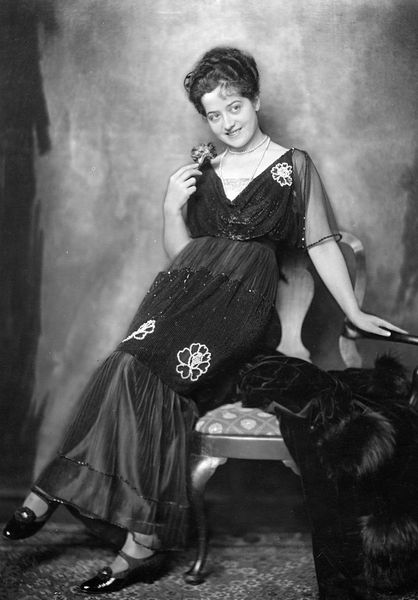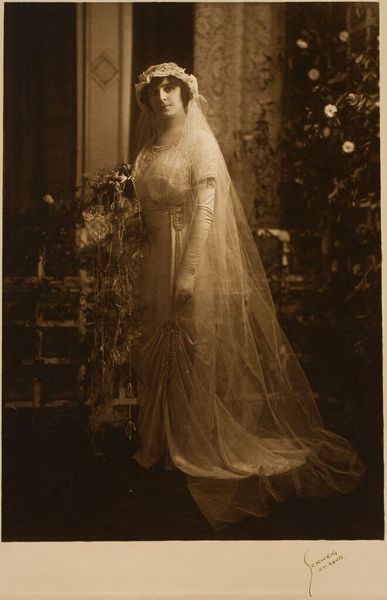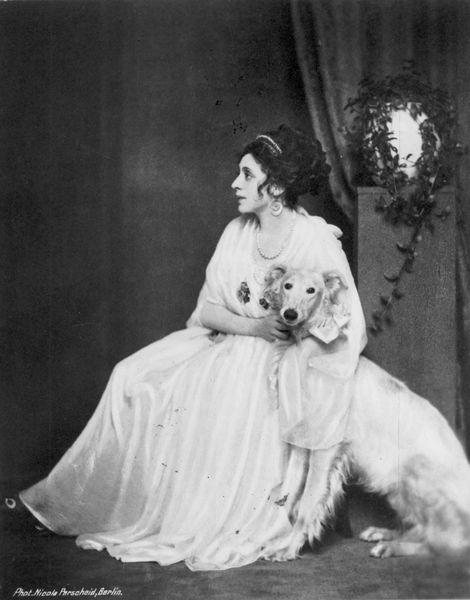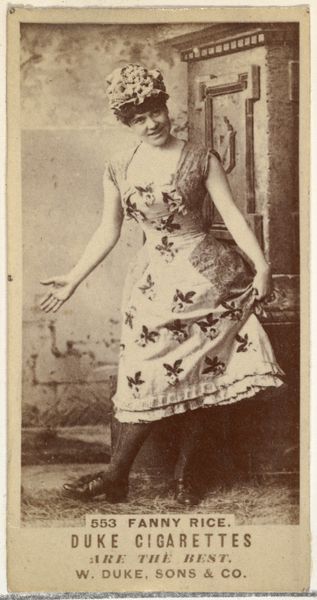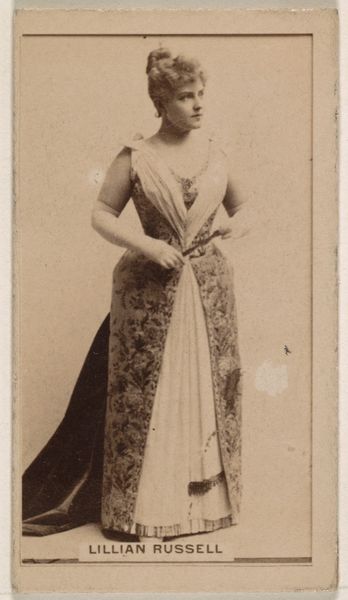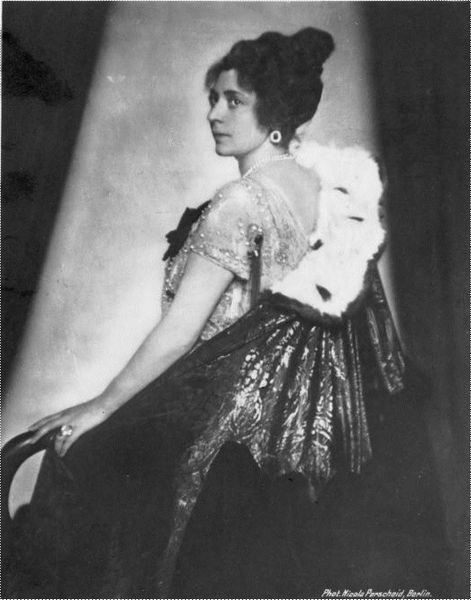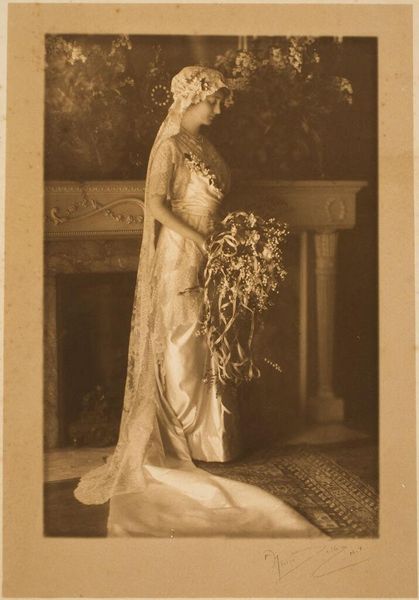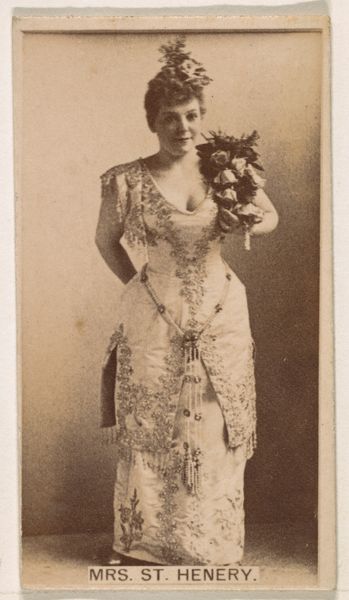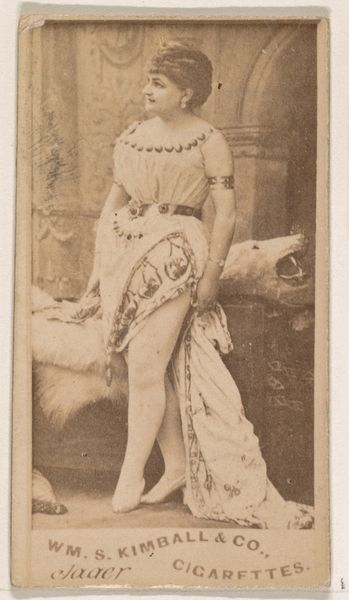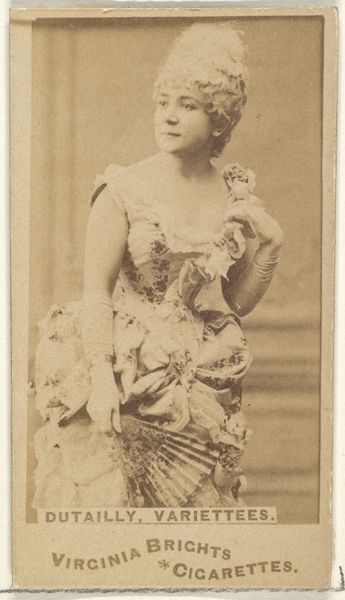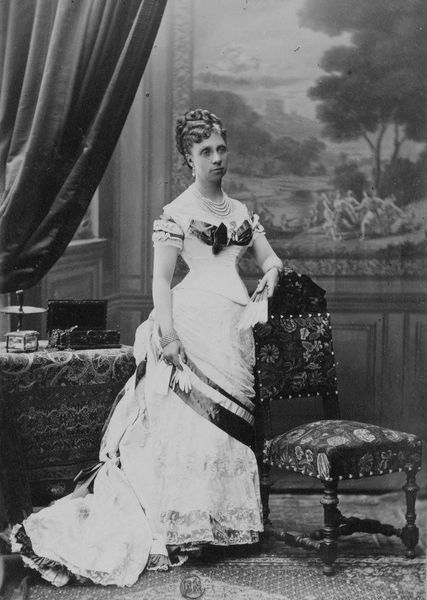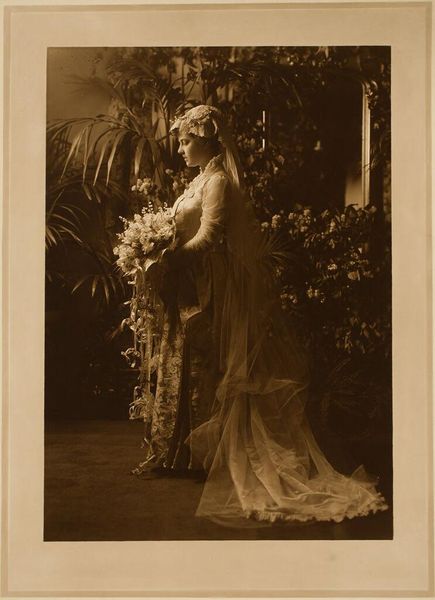
photography, gelatin-silver-print
#
portrait
#
art-nouveau
#
black and white photography
#
photography
#
black and white
#
gelatin-silver-print
#
monochrome photography
#
monochrome
#
monochrome
Copyright: Public domain
Editor: This photograph, “Dorrit Weixler,” was taken by Nicola Perscheid in 1916, rendered as a gelatin-silver print. It feels very formal, almost staged. I’m curious, what stands out to you? Curator: I immediately consider the materiality of this image. Gelatin-silver printing became a dominant process. Consider the labor involved; from creating the photographic negative to manipulating the print. Did Perscheid, or an assistant, print this? Was Dorrit Weixler an active participant in controlling her own image or was this defined by Perscheid himself? Editor: That’s interesting. I hadn't really thought about the hands-on creation of a photograph. So, the "means of production" impacts how we read the image? Curator: Precisely. And it highlights the constructed nature of portraiture itself. Note her gown. It suggests the consumerism of the elite, or perhaps the performative dress of an actress? Editor: Given the Art Nouveau influence, could that patterning on the gown be read as craft fighting for equality as "high art"? Curator: Yes, absolutely! It challenges our preconceived notions, doesn't it? Even the "artful" manipulation of the gelatin-silver print itself becomes a statement on the constructed and consumed nature of identity. The choice to use gelatin silver allows for precise control over contrast and tonality. Was this intended as an aesthetic, commercial, or material decision? Editor: So, it's about uncovering the layers of artistic intention and social influence embedded in the photograph’s physical creation. Thanks, this approach offers such a refreshing perspective. Curator: It shifts our focus to the hands that shaped this image, both literally and figuratively.
Comments
No comments
Be the first to comment and join the conversation on the ultimate creative platform.
